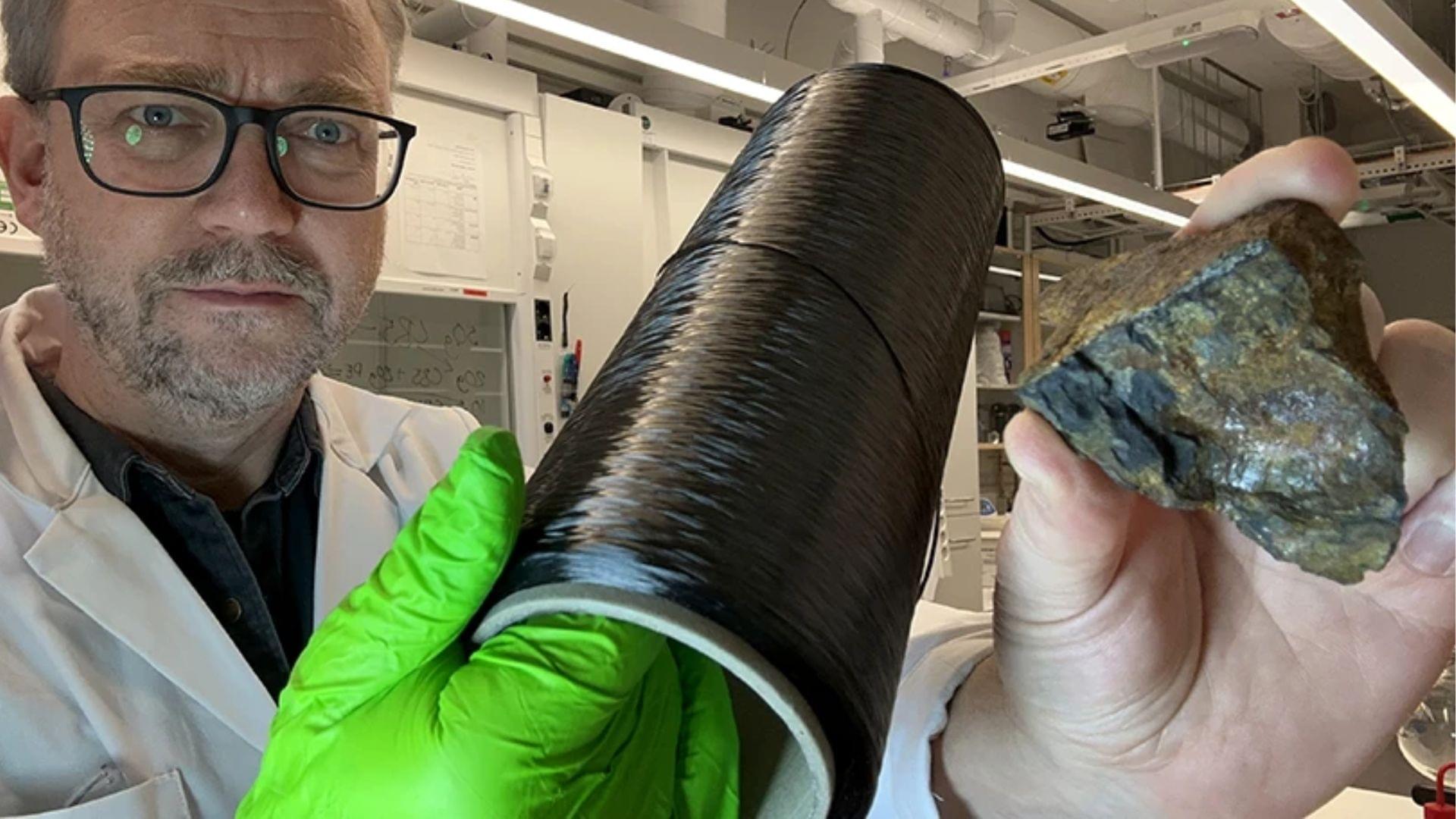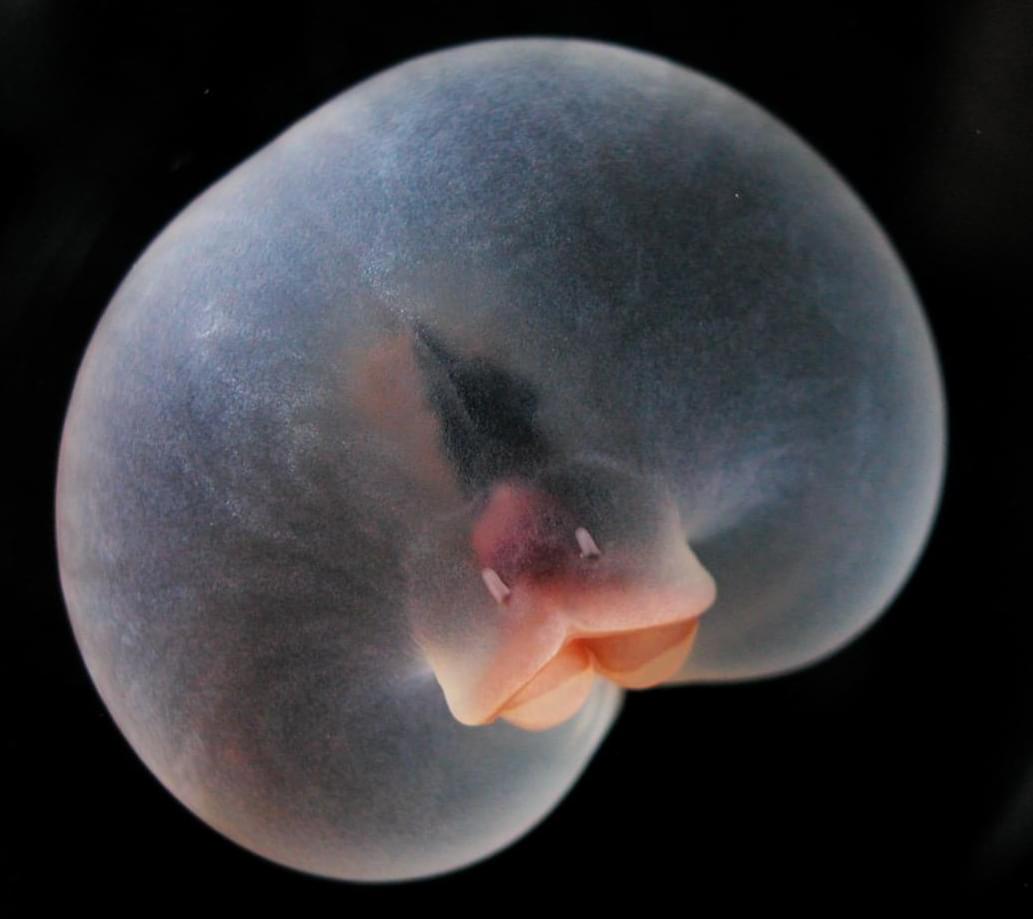Researchers created graphene oxide nanosheets from readily available carbon fibers.
Researchers develop a new method for producing graphene oxide from carbon fibers, offering a sustainable alternative to graphite mining.


Experts say the creature looks just like a floating buttocks.
Deep beneath the ocean’s surface, in the Midnight Zone where no sunlight reaches, scientists have discovered a peculiar creature.
Known as the pigbutt worm, Chaetopterus pugaporcinus was first spotted in 2001 off the coast of California. This translucent, marble-sized blob immediately baffled researchers.
Its rounded shape and distinctive lobes earned it the humorous nickname, as it amusingly resembles a pig’s behind. Marine biologists have since identified it as a type of bristle worm, though its exact life stage—whether adult or larval—remains uncertain. Unlike most of its relatives, which burrow into the seafloor, this worm floats freely in the water column, showcasing an unusual adaptation known as neoteny, where juvenile traits persist into adulthood.
Beyond its quirky appearance, the pigbutt worm possesses remarkable survival skills. Scientists have observed it generating mucus nets to trap marine snow and organic debris for sustenance. Even more astonishingly, it glows in the dark—flashing blue bioluminescence when disturbed, while its mucus net sometimes emits green light, likely as a defense mechanism against predators.
Decades after its discovery, this deep-sea enigma continues to fascinate researchers, serving as a reminder of the vast, unexplored wonders of the ocean. As marine biologist Rebecca Helm puts it, studying the deep sea feels like planetary exploration—proof that some of Earth’s most alien creatures are right here in our own waters.
Learn more.



The hippocampus is essential for episodic memory, yet its coding mechanism remains debated. In humans, two main theories have been proposed: one suggests that concept neurons represent specific elements of an episode, while another posits a conjunctive code, where index neurons code the entire episode. Here, we integrate new findings of index neurons in humans and other animals with the concept-specific memory framework, proposing that concept neurons evolve from index neurons through overlapping memories. This process is supported by engram literature, which posits that neurons are allocated to a memory trace based on excitability and that reactivation induces excitability. By integrating these insights, we connect two historically disparate fields of neuroscience: engram research and human single neuron episodic memory research.


Supersolids are strange materials that behave like both a solid and a fluid due to quantum effects – and now researchers have created an intriguing new type of supersolid from laser light.
For decades, exercise was considered an optional part of cancer care—something beneficial for general health but not essential. The evidence is now overwhelming: exercise is not just supportive—it’s a therapeutic intervention that recalibrates tumor biology, enhances treatment tolerance, and improves survival outcomes.
With over 600 peer-reviewed studies, Dr. Kerry Courneya’s work has fundamentally reshaped our understanding of how structured exercise—whether aerobic, resistance training, or high-intensity intervals—can mitigate treatment side effects, enhance immune function, and directly influence cancer progression.
Train smarter with evidence-based strategies from top experts—get your free copy of “How to Train According to the Experts” at https://howtotrainguide.com/
CHAPTERS:
00:00:00 Introduction.
00:01:47 Why exercise should be effortful.
00:02:33 How to meaningfully reduce risk of cancer.
00:06:22 What type of exercise is best?
00:07:59 How exercise reduces risk—even for smokers and the obese.
00:10:48 Weekend-only exercise.
00:13:49 150 vs. 300 minutes per week (more is better—up to a point)
00:16:03 Why pre-diagnosis exercise matters.
00:19:09 Why resilience to cancer treatment starts with exercise.
00:21:01 Why low muscle mass drives cancer death.
00:23:58 Why BMI fails to measure true obesity.
00:27:51 Why daily activity isn’t enough (structured exercise matters)
00:29:34 Breaking up sedentary time—do ‘exercise snacks’ help?
00:31:50 Supplements vs. exercise.
00:32:32 Where exercise fits with chemo and immunotherapy.
00:35:30 Why rest is not the best medicine.
00:41:20 Aerobic vs. resistance.
00:42:11 How chemotherapy patients were able to put on over a kilogram of muscle.
00:42:13 How weight training improves ‘chemo completion’
00:44:41 Why exercise creates vulnerability in cancer cells (limitations do apply)
00:47:09 Why exercise might be crucial for tumor elimination.
00:53:03 Why cardio may be better at clearing tumor cells.
00:56:18 When cancer spreads quickly—and when it doesn’t.
00:57:43 Why liquid biopsies may prevent over-treatment.
01:02:56 Exercise-sensitive vs. exercise-resistant cancers.
01:06:06 Prostate cancer therapy—why strength training matters.
01:08:10 When exercise is the only therapy—does it work?
01:09:26 Why HIIT reduces PSA in prostate cancer.
01:11:40 Avoiding over-treatment—can exercise buy you time?
01:12:00 Why high-intensity exercise boosts anti-cancer biology.
01:13:11 Turning a diagnosis into a wake-up call.
01:16:11 Why oncologists are rethinking exercise.
01:18:50 Why exercise eases anxiety about cancer—proven psychological benefits.
01:25:00 Before, during, and after treatment.
01:27:02 Why exercise is unique among cancer therapies.
01:28:16 Why cancer patients stop exercising—the risky mistake almost everyone makes.
01:30:41 How to get sedentary cancer patients exercising (realistically)
01:33:15 The $1 million case for including exercise.
01:34:56 Why recurrence trials haven’t convinced doctors—yet.
01:37:36 The bottom-line message.
01:37:55 The myth of a cancer panacea (exercise included)
01:44:07 What’s the best $50 investment for staying active?
01:44:40 Only 15 minutes per day—what’s the best anti-cancer exercise?
A quick cautionary note: Always consult a qualified healthcare provider—presumably an oncologist if your questions involve cancer treatment—particularly if you’re considering actions based on or inspired by our conversation today. This episode should not be construed as a substitute for qualified medical advice.
*Kerry Courneya, PhD*
PBS Member Stations rely on viewers like you. To support your local station, go to: http://to.pbs.org/DonateSPACE
Sign Up on Patreon to get access to the Space Time Discord!
/ pbsspacetime.
Physics is the business of figuring out the structure of the world. So are our brains. But sometimes physics comes to conclusions that are in direct conflict with concepts fundamental to our minds, such as the realness of space and time. How do we tell who’s correct? Are time and space objective realities or human-invented concepts?
Episode Companion Playlist.
• What If Space And Time Are NOT Real?…
Check out the Space Time Merch Store.
https://www.pbsspacetime.com/shop.

Hydrogen energy promises a clean and sustainable future, but its production often depends on expensive platinum-based catalysts, making it costly. The industry needs more affordable alternatives to platinum to make hydrogen energy more viable.
Researchers from the Tokyo University of Science (TUS) have developed a new catalyst called bis(diimino)palladium coordination nanosheets (PdDI). These low-cost palladium-based nanosheets match platinum’s performance in producing hydrogen.